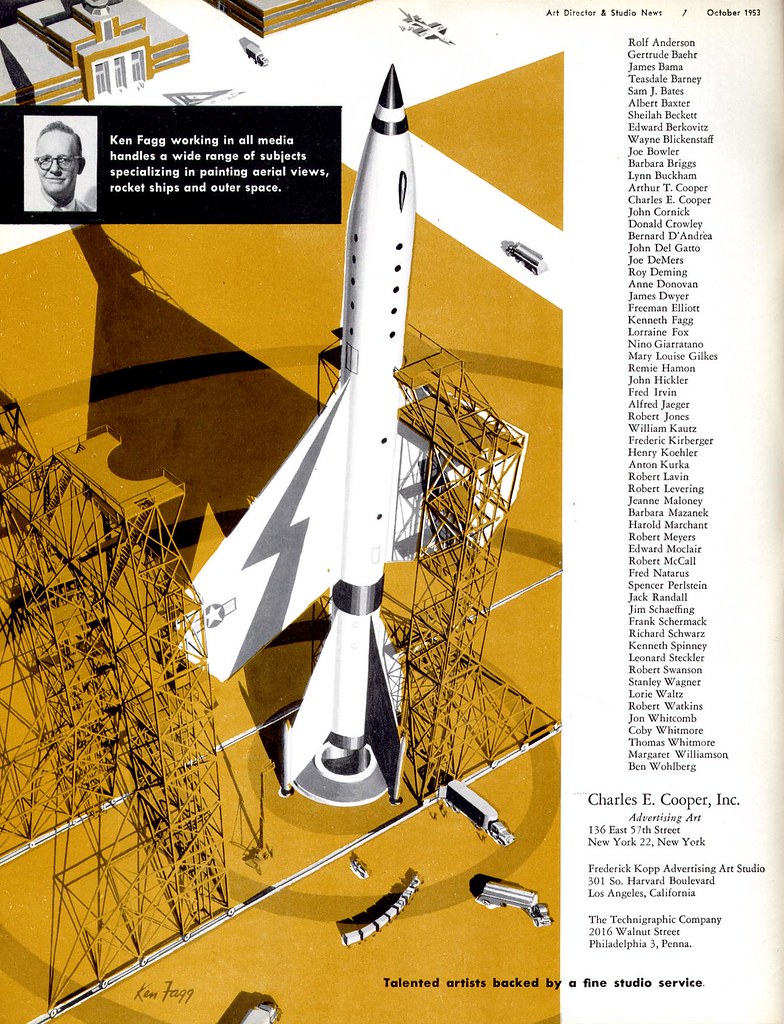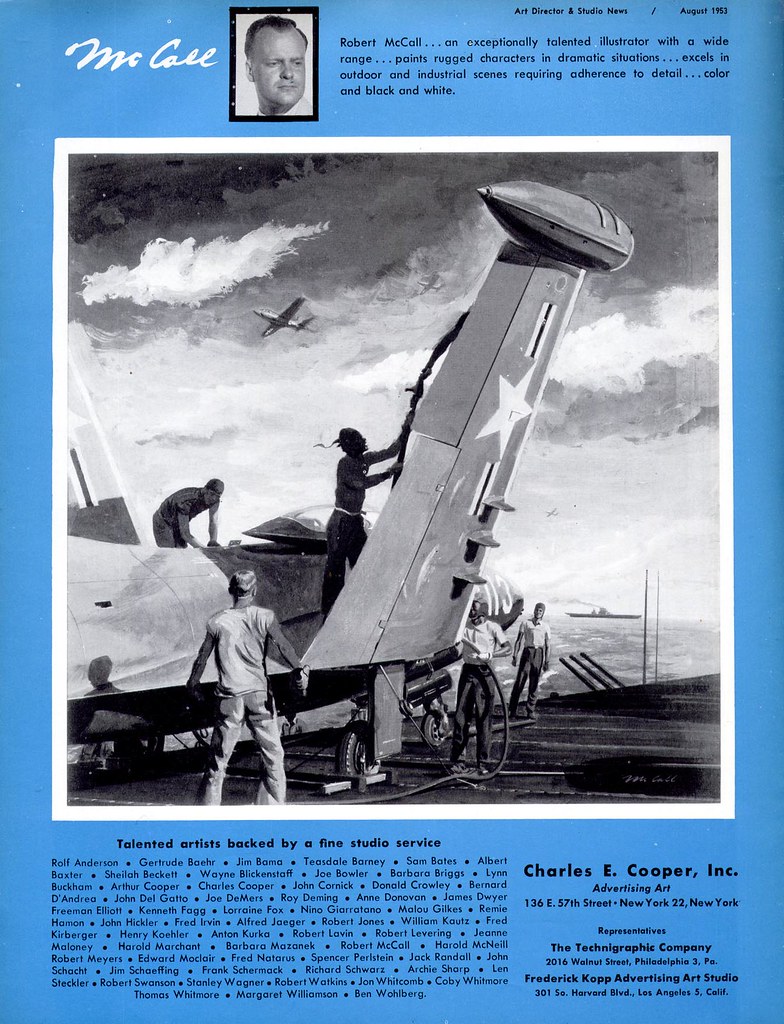
"Although [Charles E. Cooper's] training was in art...his skills were more on the organizational side. He understood what artists needed and made sure they had it.
As much as he could, Cooper provided a hassle-free environment for his artists at his studio. From a 1945 article in American Artist:
"There is nothing'arty' or bohemian about the Cooper Studio; its plan is functionally designed and its business practice is geared to that of modern industry which is its client. Individual studios for member artists have north light and sound-proof doors entering hallways. There is a complete photographic studio with darkroom, costume room and two dressing rooms. An assembly and shipping room is centrally located. The conference room, a large salesman's room with files of artist's samples, a library and general business offices take up the remaining space."

Walt Reed of Illustration House in New York ...observ[ed]: "The Cooper Studio [was] the ultimate in expert artists - top name artists - employed in a common purpose."
*You can read the entire article by author Neil Shapiro in the 16th issue of Illustration magazine.
I collect vintage space art and have seen a lot of technically impressive illustrations, but the detail of the gantry in the Ken Fagg piece is insane! Whatever possessed him.
ReplyDeleteA sign of a committed craftsman, I guess, Jack. Thanks for your comment!
ReplyDelete